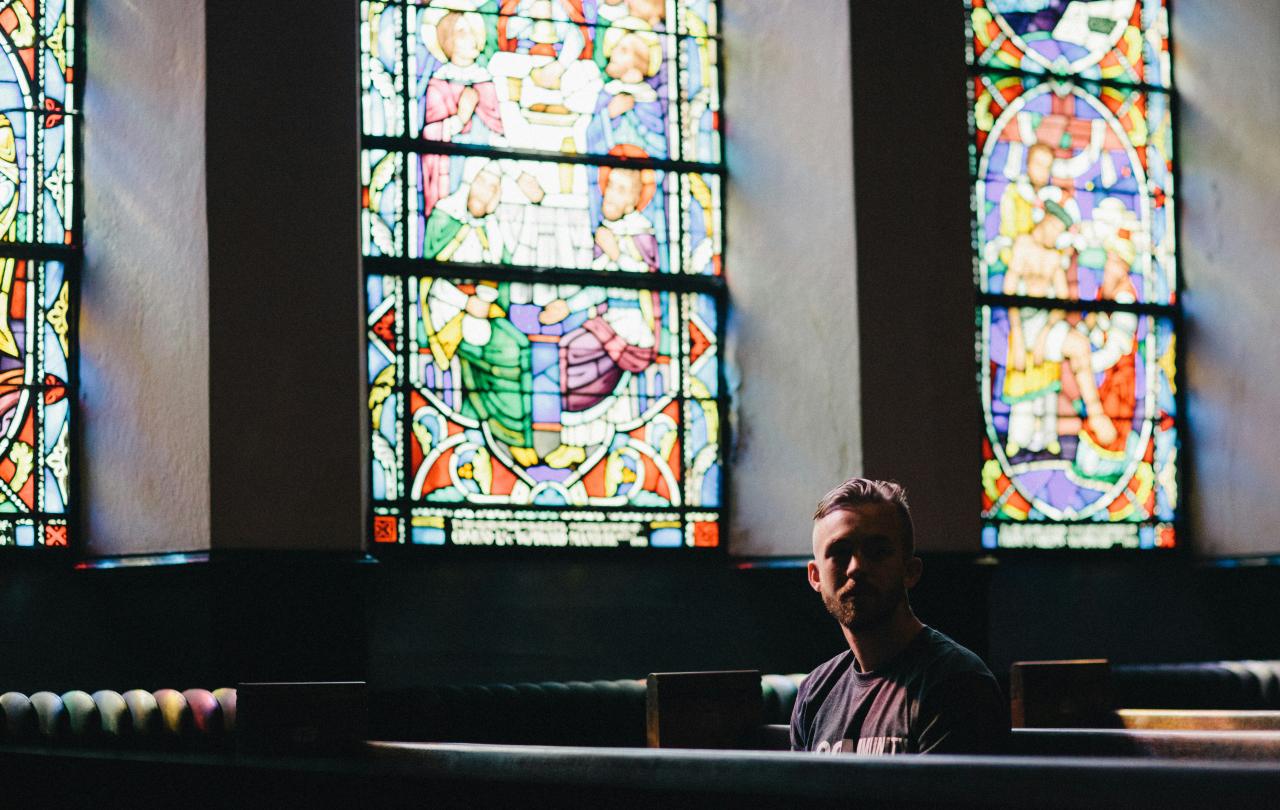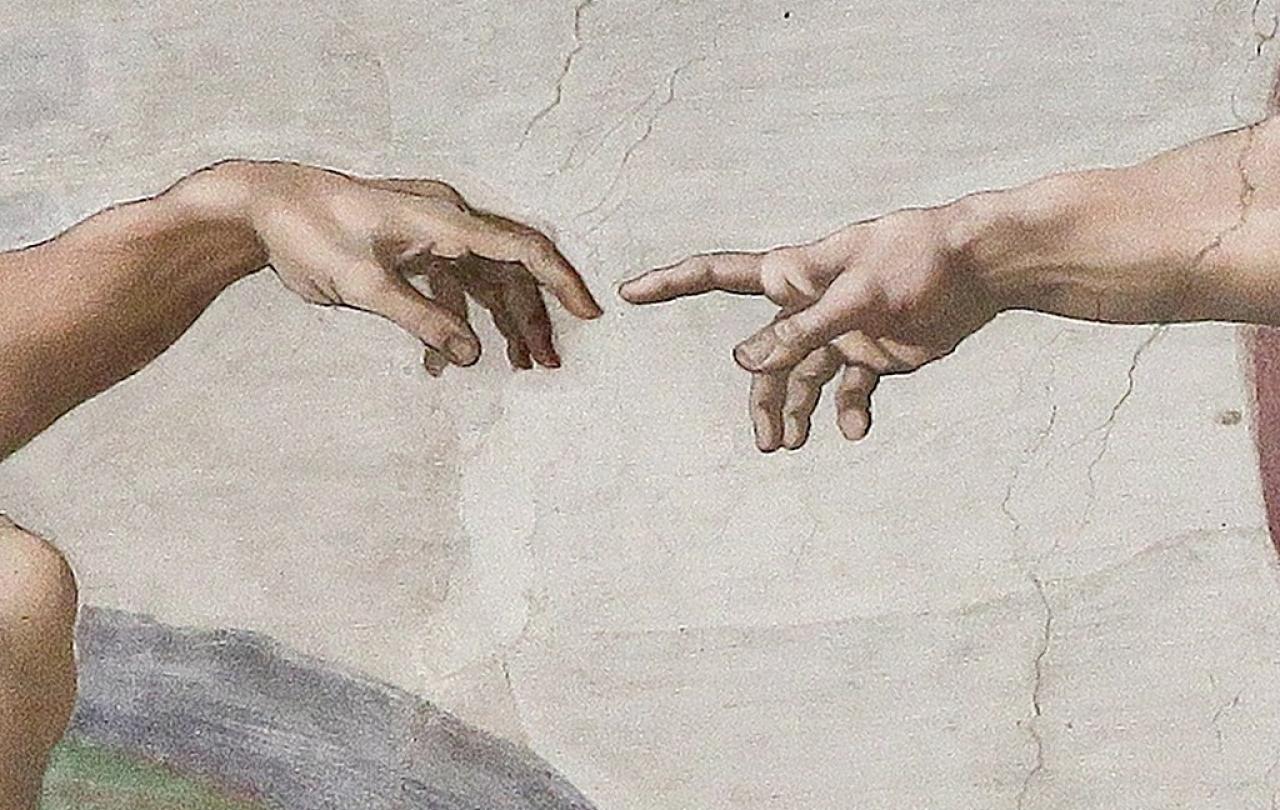
Was 2024 the year Christianity turned a corner? Throughout the year, on substacks, websites, YouTube videos, and Instagram posts, the signs kept cropping up of what Re-Enchanting co-host Justin Brierley has called the Surprising Rebirth of Faith in God.
Over recent years, and throughout 2024, we have seen a stream of public figures declaring various degrees of interest in Christianity, or even full-on faith. Rowan Williams described the usual suspects well, imagining a scene in an English Churchyard: “Some… have been professed believers (Francis Spufford, Nick Cave, Paul Kingsnorth), some have lingered in the church porch (Tom Holland, Philip Goff), some are still on a bench in the grounds (Alain de Botton).” And there is Ayaan Hirsi Ali (singing along from the pews), Russell Brand (posting Instagram reels from the font?), Louise Perry (on the bench, next to de Botton?), Jordan Peterson (sometimes in the pulpit, sometimes in the porch), and even Richard Dawkins (smiling at the choir’s rendition of Silent Night as he wanders past).
In the USA, it’s similar. Yet more complicated. The alliance of Evangelicalism with Donald Trump is problematic, to say the least. J.D. Vance is a serious Christian, having made the journey from an evangelical church upbringing, through student atheism into Roman Catholicism. Shia LeBoeuf and Candace Owens are among other US celebrities finding faith recently, while academic Rod Dreher’s public journey into Eastern Orthodoxy has been watched by many. On our Re-Enchanting podcast, Molly Worthen is a good example of why, despite everything, sceptics like her can still find faith in the USA.
In the UK’s Assisted Dying debate, the place of religion was a hot topic. The case made against the bill by Christians gained a strong hearing, so much so that secular voices started crying foul, arguing that religious voices should not be heard, or at least, such people should declare their hand (though the number of people starting their case with ‘I’m a secular person, and that may colour my beliefs on this, but…” were hard to find).
In public life, explicitly Christian writers such as Rowan Williams, Elizabeth Oldfield, Nicholas Spencer, Madeline Davies, Giles Fraser and Marcus Walker command an audience, and maybe this website - Seen & Unseen - in its own small way is helping to provide a stronger, more intelligent Christian voice in culture.
Nonetheless, let’s not get carried away. The Assisted Dying bill passed. Despite the celebrity names, numbers going to church continue to fall, and the public assumptions of the culture remain firmly secular.
Recent articles in the Spectator express the dilemma well. A. N. Wilson pens a gloomy assessment of the prospects of Christianity in the west, entitled Is the End of Christendom Nigh?, looking out from his pew on a dwindling local congregation of elderly people, watching the lights go out on Christian culture in the west. Yet at the same time Ayaan Hirsi Ali writes a piece about her second Christmas as a Christian, called A Christian Revival is Under Way. Which is it? Maybe to adjudicate, an editorial, presumably written by its new editor, Michael Gove, entitled In Defence of Faith makes a strong case for Christian faith and its place in national life.
Anecdotally, at the local level, stories abound of people stepping into churches, seeking some kind of meaning in life and re-engaging with faith. Sometimes it’s the powerful emotion of charismatic or Pentecostal worship, sometimes the majesty of cathedrals or the mystery of Orthodox liturgy. Our local church in Oxford has a regular stream of stories of students exploring and finding faith and I keep hearing the same story in churches across the country.
“People need meaning, and the secular world didn’t come up with the goods.”
My take on this, for what it’s worth, is that western culture has run out of steam, either temporarily or for good. In the twentieth century, both Fascism and Communism rose and fell. Francis Fukuyama declared the ‘end of history’ in the triumph of secular, liberal, consumer capitalism. Yet this too has run out of steam, increasingly felt to be spiritually hollow and politically suspect. ‘Woke culture’ was an attempt to restore a set of moral values to restrain the unpleasant and unjust effects of the unbridled market, yet its stridency and aggressiveness, its Canute-like attempt to resist aspects of natural order, not to mention its adoption of a destructive fixation on a reductive identity politics has generated a backlash of its own.
The elections of 2024 were instructive. Keir Starmer won not because he offered a compelling vision but because he said so little. There was no ‘Yes We Can’ Obama slogan, no Blairite ‘New Labour, New Britain’ moment. No-one knew what he stood for, but we were so fed up with the Conservatives that we just wanted them out. Even with Trump in the USA, unlike last time, people knew what they were getting, yet they voted for him anyway, mainly because they felt he would fix the economy and immigration better than the Democrats who had failed on both.
Nick Cave put it well in a recent interview in the Times: “people need meaning, and the secular world didn’t come up with the goods.” The perennial human search for purpose and significance hasn’t gone away, and there is not much on offer in secular culture. So, people are suddenly open to exploring more ancient stores of wisdom.
Perhaps the greatest irony of all is that just at the time when we might be seeing the stirring of an openness to the spiritual, the numinous and the religious, the Church (at least in the UK - other places may be doing better) seems in no state to capitalise. The Church of England has been absorbed in a lengthy and acrimonious debate over human sexuality and same-sex marriage over the past five years, the Archbishop of Canterbury has had to resign over the Church’s failure to enact a properly functioning safeguarding culture, and the free churches are in free fall.
So, what are the prospects for 2025? Maybe the Church of England can find a settlement in its civil war on sexuality, finding a way for the warring parties to live together, even if it has to be at some distance within the same church for a while. Then we might see which side (or perhaps both in their different ways?) might be better placed to appeal to jaded, secular people who are waking up to the lack of meaning in their lives and the potential of Christian faith to offer a satisfying vision of reality and a new way of living.
Perhaps a new Archbishop of Canterbury might come in, untainted by past safeguarding failures, and, despite the impossibilities of the job, able to steadily steer the church towards its spiritual heart. At the end of his monumental and increasingly influential The Master and his Emissary, neuroscientist Iain McGilchrist (not a Christian himself) makes a telling point: “The Western Church has in my view been active in undermining itself. It no longer has the confidence to stick to its values but instead joins the chorus of voices attributing material answers to spiritual problems.”
Back in 1930, an Anglican lay mystic from Notting Hill, Evelyn Underhill wrote to the Archbishop of Canterbury at the time, Cosmo Lang with words that put their finger on what the Church might need now:
“God”, she wrote “is the interesting thing about religion, and people are hungry for God.” She went on: “We look to the Church to give us an experience of God, mystery, holiness and prayer which, though it may not solve the antinomies of the natural world, shall lift us to contact with the supernatural world and minister eternal life.”
A church that is seen as ‘a dull echo of the liberal consensus’ as the former Bishop of London, Richard Chartres used to say, is hardly worth the candle. If the message of the church is a vaguely religious version of what you can already find in the Guardian (or the Telegraph for that matter) then why bother with it?
As Rod Dreher put it recently: “only the return of strong religion - one that makes demands, offers compelling explanations to the problems of death and suffering, and gives worshippers a visceral sense of connecting to the living God - has any hope of competing in the post Christian marketplace.”
In 2024, religion in general and Christianity in particular has never been far from the front pages, for better or worse. God has not gone away. Dreher may well be right. And the Church, if it is to make the most of a season where troubled people are beginning to look its way again may need to take notice.





